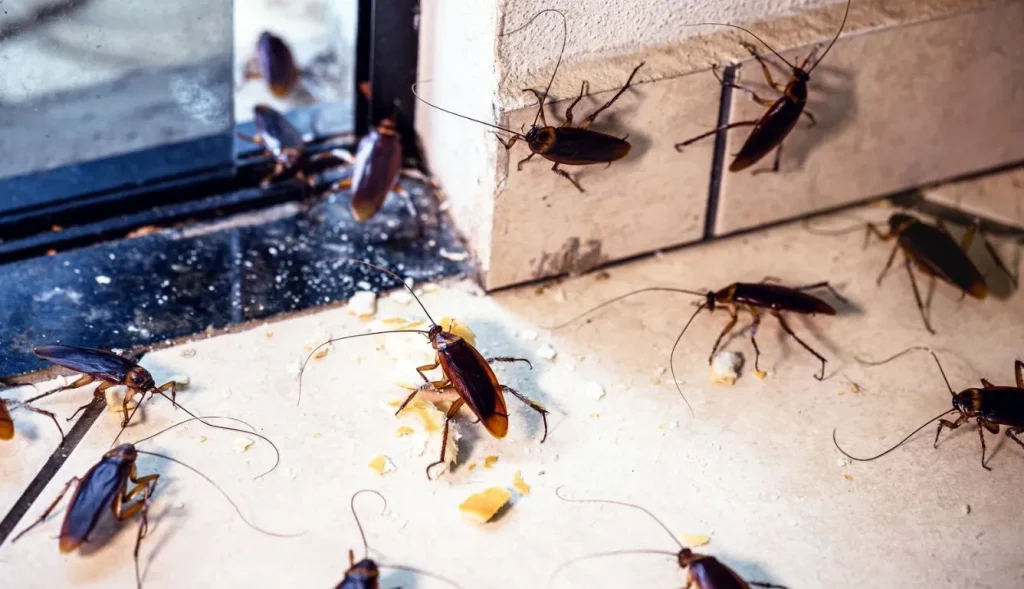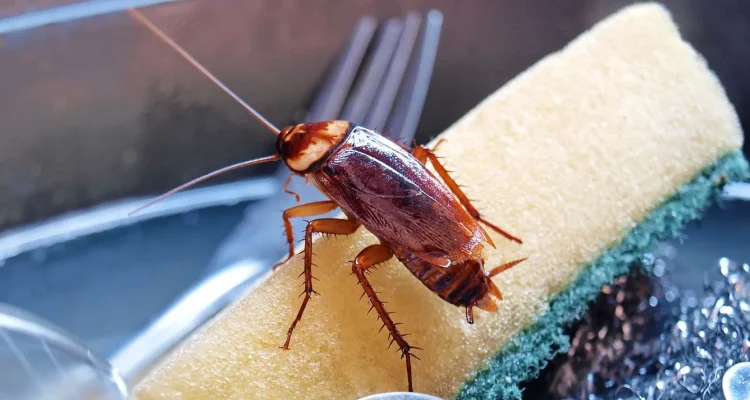Introduction
Cockroaches are one of the most unwelcome guests in any home. These resilient pests can survive in almost any environment, making them difficult to get rid of once they’ve invaded. While chemical repellents are often the go-to solution, many people are turning to natural methods to keep their homes roach-free. Why? Because natural repellents offer a safer, more environmentally friendly alternative. In this article, we’ll explore what repels roaches naturally, providing you with effective, non-toxic solutions to this persistent problem.

Understanding Roaches
Common Types of Roaches
Before diving into the natural repellents, it’s essential to understand the enemy. The most common types of roaches you’ll encounter in your home are the German cockroach, the American cockroach, and the Oriental cockroach. Each of these species has unique characteristics, but they all share a common trait: the ability to thrive in environments where food, warmth, and moisture are present.
Roach Behavior and Habitats
Roaches are nocturnal creatures that prefer to stay hidden during the day. They are attracted to dark, damp areas where they can find food and water. Common hiding spots include under sinks, behind appliances, and in cracks and crevices. Understanding their behavior can help you place natural repellents more effectively.
Why Roaches Invade Homes
Roaches invade homes primarily in search of food and water. They are particularly drawn to kitchens and bathrooms, where crumbs, grease, and moisture are abundant. However, they can also enter homes through cracks in walls, gaps in windows and doors, and even through plumbing. Once inside, they can quickly multiply, making them a formidable pest to control.
The Drawbacks of Chemical Repellents
Health Risks of Chemical Roach Repellents
Chemical repellents, while effective, come with a host of potential health risks. Many contain toxic substances that can be harmful to humans, especially children and pets. Exposure to these chemicals can lead to respiratory issues, skin irritation, and other health problems. Moreover, the long-term effects of these chemicals are still not fully understood.
Environmental Impact of Chemicals
In addition to health risks, chemical repellents can have a significant environmental impact. These substances can contaminate soil and water, harming wildlife and disrupting ecosystems. The production and disposal of chemical repellents also contribute to pollution, making them a less sustainable option for roach control.
Benefits of Natural Roach Repellents
Safety for Humans and Pets
One of the most significant advantages of natural roach repellents is their safety. Natural ingredients like essential oils, herbs, and household items pose little to no risk to humans and pets when used correctly. This makes them an ideal choice for families who want to avoid exposing their loved ones to harmful chemicals.
Environmental Friendliness
Natural repellents are also more environmentally friendly than their chemical counterparts. Most natural ingredients are biodegradable and have minimal impact on the environment. Using these alternatives helps reduce your ecological footprint and promotes a healthier planet.
Cost-Effectiveness
Another benefit of natural repellents is their cost-effectiveness. Many natural ingredients can be found in your kitchen or garden, making them a budget-friendly option for pest control. Even when purchased, these ingredients are often cheaper than commercial chemical repellents.
Top Natural Ingredients That Repel Roaches
Essential Oils
Peppermint Oil
Peppermint oil is a powerful natural roach repellent. Its strong scent overwhelms the roaches’ sense of smell, deterring them from entering your home. To use peppermint oil, mix a few drops with water and spray it around entry points and areas where roaches are commonly found.
Eucalyptus Oil
Eucalyptus oil works similarly to peppermint oil, emitting a scent that roaches find repulsive. It can be used in the same way, either by mixing it with water to create a spray or by placing a few drops on cotton balls and leaving them in strategic locations.
Tea Tree Oil
Tea tree oil is another effective essential oil for repelling roaches. In addition to its strong scent, tea tree oil has antimicrobial properties that can help keep your home clean and less attractive to pests. Mix it with water and spray it around your home for best results.
Herbs and Spices
Bay Leaves
Bay leaves have been used for centuries as a natural pest repellent. Roaches are deterred by their smell, making them a simple yet effective way to keep these pests at bay. Place dried bay leaves in cabinets, drawers, and other areas where roaches are likely to hide.
Cinnamon
Cinnamon is another spice that roaches dislike. Its strong scent can drive them away, making it an excellent natural repellent. Sprinkle cinnamon powder around the perimeter of your home, or use cinnamon essential oil in a spray to keep roaches at bay.
Garlic
Garlic’s pungent odor is not only useful in cooking but also as a natural roach repellent. Crush a few cloves of garlic and place them in areas where roaches are likely to enter your home. You can also mix garlic powder with water to create a spray.
Household Ingredients
Vinegar
Vinegar is a versatile household ingredient that can also be used to repel roaches. Its strong smell is unpleasant to roaches, making it an effective deterrent. Mix equal parts vinegar and water in a spray bottle and apply it to areas where roaches are commonly found.
Baking Soda
Baking soda is not just for baking; it’s also a great natural roach repellent. When ingested by roaches, baking soda reacts with the acids in their stomachs, causing them to die. Mix baking soda with sugar to attract roaches, and place the mixture in areas where they’ve been spotted.
Diatomaceous Earth
Diatomaceous earth is a natural powder made from fossilized remains of tiny aquatic organisms. It’s safe for humans and pets but deadly to roaches. The sharp edges of the powder cut through the roaches’ exoskeletons, causing them to dehydrate and die. Sprinkle it in cracks, crevices, and other areas where roaches hide.
How to Use Natural Roach Repellents Effectively
Creating Sprays
Essential Oil Sprays
To create an essential oil spray, mix 10-15 drops of your chosen essential oil (such as peppermint, eucalyptus, or tea tree oil) with water in a spray bottle. Shake well and spray it around entry points, baseboards, and other areas where roaches are commonly found.
Vinegar Solutions
A vinegar solution is easy to make and highly effective. Combine equal parts vinegar and water in a spray bottle, shake well, and apply it to areas where roaches are likely to be found. This solution can also be used to clean surfaces, making your home less attractive to roaches.
Strategic Placement
Where to Place Repellents
Placement is key when using natural repellents. Focus on areas where roaches are likely to enter your home, such as doorways, windowsills, and cracks in walls. Also, target common hiding spots like under sinks, behind appliances, and inside cabinets.
Frequency of Application
Natural repellents may need to be reapplied more frequently than chemical ones. Depending on the repellent used, you may need to reapply every few days to maintain its effectiveness. Monitor your home for roach activity and adjust your application schedule as needed.
Maintaining a Clean Environment
Reducing Food Sources
One of the most effective ways to prevent roaches from invading your home is to eliminate their food sources. Keep your kitchen clean by wiping down surfaces, sweeping up crumbs, and storing food in airtight containers. Regularly take out the trash and clean up spills immediately.
Sealing Cracks and Crevices
Roaches can enter your home through even the smallest cracks and crevices. Inspect your home for potential entry points and seal them with caulk or weather stripping. Pay special attention to areas around windows, doors, and plumbing fixtures.
Combining Natural Methods for Best Results
Using a combination of natural repellents can be more effective than relying on just one method. For example, you can use essential oil sprays in conjunction with diatomaceous earth for a multi-faceted approach to roach control. Additionally, regularly monitor your home for signs of roach activity and adjust your strategies as needed to keep them at bay.
FAQs
What is the most effective natural roach repellent?
Peppermint oil is considered one of the most effective natural roach repellents due to its strong scent, which roaches find overwhelming.
How long do natural roach repellents last?
The effectiveness of natural repellents can vary, but they generally need to be reapplied every few days to maintain their potency.
Can natural repellents be harmful to pets?
Most natural repellents are safe for pets, but it’s essential to use them as directed. Some essential oils, like tea tree oil, can be harmful to pets if ingested or applied directly to their skin.
Do natural repellents work on all types of roaches?
Yes, natural repellents can be effective against various types of roaches, including German, American, and Oriental cockroaches.
Is it necessary to use natural repellents even if I keep my house clean?
While keeping your home clean is crucial in preventing roach infestations, using natural repellents can provide an extra layer of protection by deterring roaches from entering your home.

Conclusion
Natural roach repellents offer a safe, effective, and environmentally friendly way to keep these unwanted pests out of your home. By understanding the behavior of roaches and using natural ingredients like essential oils, herbs, and household items, you can create a hostile environment for roaches without resorting to harmful chemicals. Remember to maintain a clean home and seal any potential entry points to maximize the effectiveness of your natural roach control efforts.


Congratulation!